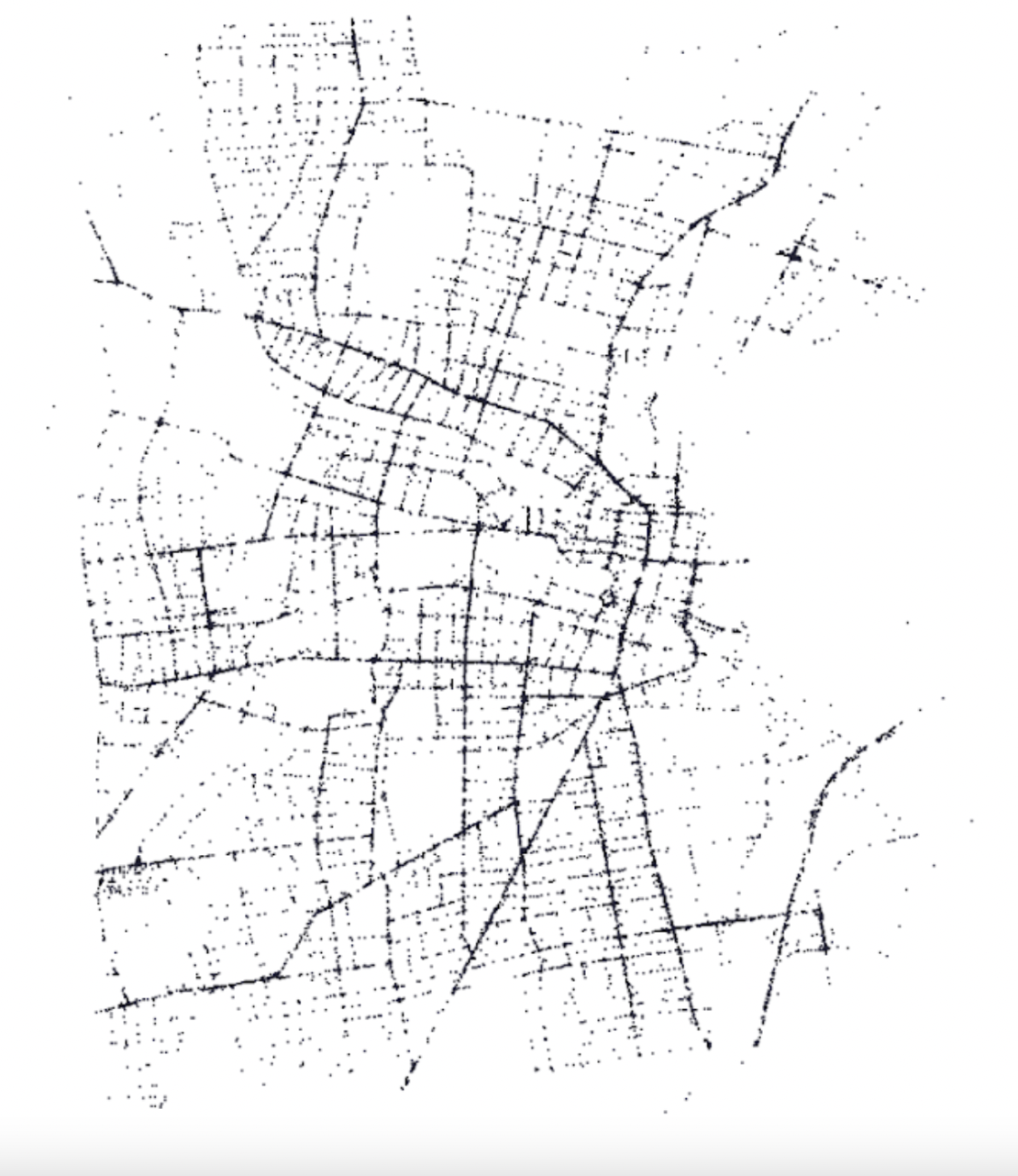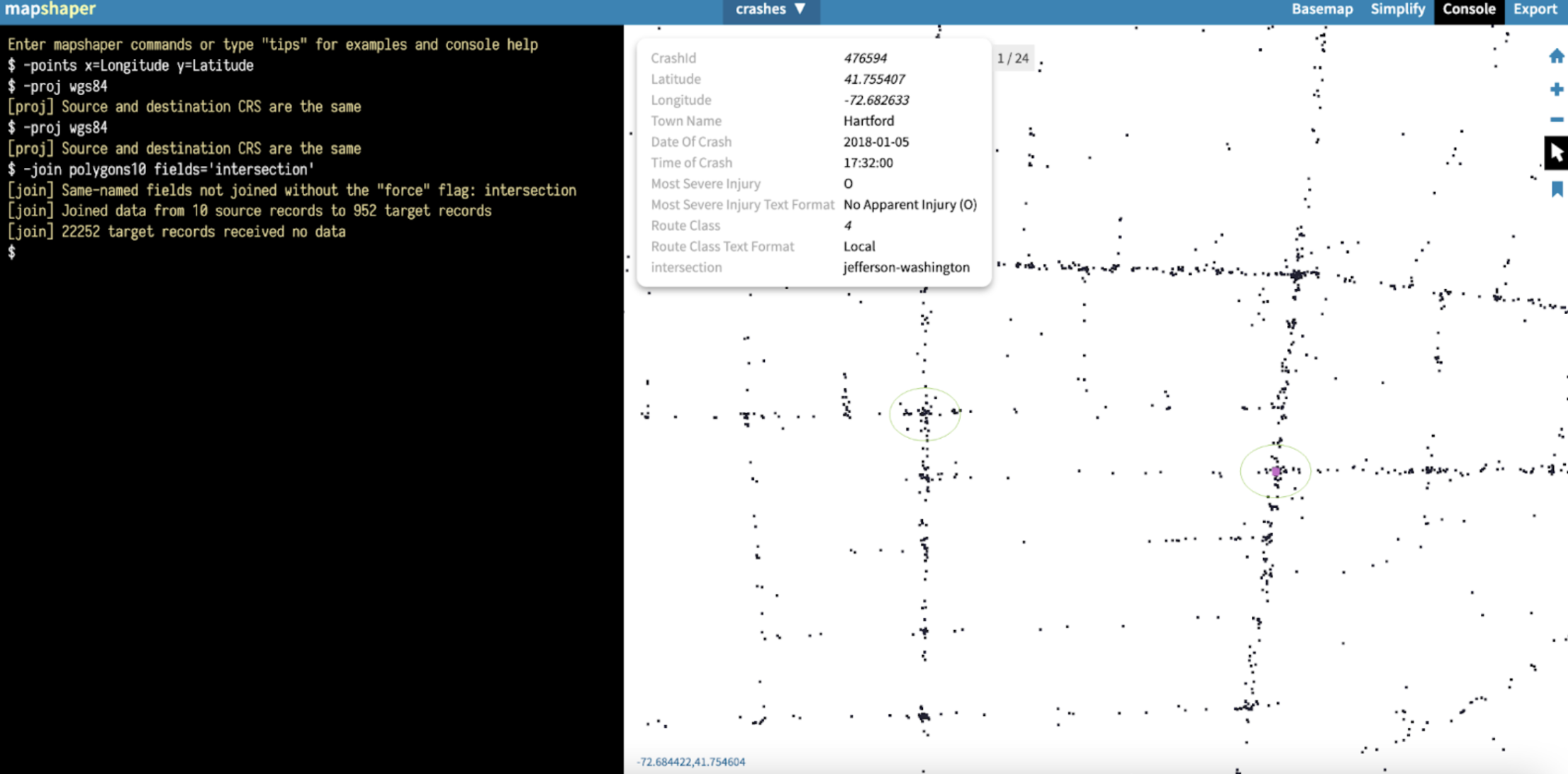Findings & Evidence
With this limited number of intersections, it is hard to determine what this data means for Hartford as a whole. However, we found that from the Hartford Crash (Heat) Map, the ten major intersections that we selected based on indication of high density of crashes, make up slightly over 4% of crashes in Hartford. Notably, Morgan St and Market St make up almost 1% of the total crashes in Hartford as a singular intersection (shown in the Figure 3 below). Although this is a small percentage, out of the many corridors and intersections in the city of Hartford, these numbers are significant.
Figure 3 as seen above, shows the percentage of crashes in Hartford that occurred at individual intersections from 2018-2022.
Figure 4, as seen above, shows the number of crashes, as well as their severity, at ten major intersections in Hartford.
Based on our visualizations, we are unable to determine the causes of these crashes because we do not have sufficient information needed which could include factors such as which intersections have stop lights, converging multi-lane roads, etc. Although this is true, we can offer two notable trends in certain intersections based on what we can see in the map below. Firstly, 3 out of 10 of these high-density crash intersections involve a 3-or-more road intersection. One of which, is a 5-road intersection, Main-Jefferson-Wyllys-Maple Ave-Congress, and two of which are in close proximity (within 150 meters or less than 0.1 miles) to a 3-or-more road intersection, Asylym-Cogswell and Wyllys-Wethersfield. This may indicate that close proximity to multiple roads and directions of traffic may be a variable in the crash rates. Secondly, 2 high-density crash intersections, Jefferson-Washington and the 5-road intersection, are within 800 meters (0.5 miles) away from the Hartford Hospital and its Emergency Room. Also, the intersections are both located on Jefferson street which borders the hospital. This may also indicate that with the urgency of potential hospital and ER visits, higher driving speeds may exist on these intersections causing higher crash rates.

Thus, albeit there is not an overarching trend for the majority of high-crash intersections, there are trends at which the city of Hartford can use for change. These changes can include increasing traffic calming measures at intersections with 3+ roads and in those that are in close proximity to hospitals. Aforementioned, the intersections we studied make up a small portion of the total intersections in Hartford, but still make up 4% of the total crashes (including corridor crashes). Therefore, we can conclude that these intersections are areas of crash-conflict which can be an indicator of necessary infrastructure reevaluation.
Moreover, at the ten intersections we studied, the numbers of severe and fatal injuries were low (as seen in Figure 4). Based on this, although Hartford is tied for the highest rate of crash fatalities per 100,000 people out of the five most populated cities in Connecticut, the low count of serious injuries and deaths at these 10 high-crash intersections means that we cannot conclude that the intersections themselves are the causes of the fatal crashes.
In summation, we conclude that these 10 intersections are a cause of concern when it comes to crash frequency, but further research is required to determine whether they are a concern in reference to serious injuries and/or fatalities.
 Then, to determine the intersections that have had a high number of crashes since 2018, we looked at the
Then, to determine the intersections that have had a high number of crashes since 2018, we looked at the  After that, we imported the placemark file into mapshaper and merged it with the existing map by typing “-join polygons10 fields=’intersection’” and then exported it as a geojson.
After that, we imported the placemark file into mapshaper and merged it with the existing map by typing “-join polygons10 fields=’intersection’” and then exported it as a geojson.
 The above images show the mapshaper map of crashes, the placemark map of intersections, and the combined mapshaper map.
The above images show the mapshaper map of crashes, the placemark map of intersections, and the combined mapshaper map.